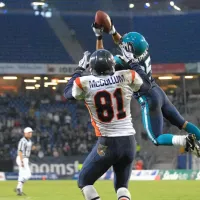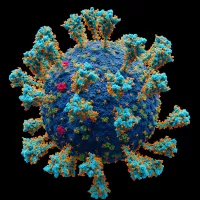October 1905: Sevilla FC Founded
In October 1905, Sevilla FC, Betis' city rivals, were founded as the first club in Seville.
September 1907: España Balompié established
In September 1907, España Balompié, a second club in Seville, was established by students from the local Polytechnic Academy.
1909: España Balompié officially recognised
In 1909, España Balompié was officially recognised, one year after its establishment.
1909: Move to Campo del Prado de Santa Justa
In 1909, Real Betis moved to the Campo del Prado de Santa Justa.
1914: Merger with Sevilla Balompié
In 1914, Betis Football Club merged with Sevilla Balompié. The club also received royal patronage in the same year, adopting the name Real Betis Balompié.
1914: Real Betis receives royal patronage
In 1914, Real Betis received patronage from King Alfonso XIII, leading to the addition of 'Real' (Royal) to the club's name.
1914: Team becomes Real Betis Balompié
In 1914, when the team became Real Betis Balompié, various kits were used, including yellow and black stripes, green T-shirts and a reversion to the blue top and white shorts uniform.
1916: First Copa Andalucía
In 1916, the first Copa Andalucía was held, marking the first official derby of the Sevilla area.
November 1918: First Game at Campo del Patronato Obrero
On November 1, 1918, Real Betis played their first game at the Campo del Patronato Obrero against Sevilla, resulting in a 5–1 loss.
1929: Construction of Estadio de la Exposición
In 1929, the Estadio de la Exposición (later known as Estadio Benito Villamarín) was constructed.
June 1931: Betis reaches Copa del Presidente de la República final
On 21 June 1931, Betis reached the Copa del Presidente de la República final for the first time, losing 3–1 to Athletic Bilbao in Madrid.
1932: Betis wins Segunda División title
In 1932, Betis marked their 25th anniversary year by winning their first Segunda División title, finishing two points ahead of Real Oviedo, thus becoming the first club from Andalusia to play in La Liga.
1934: First Top Division Match
In 1934, Real Betis and Sevilla played for the first time in the Spanish top division during the 1934–35 season, resulting in a 0–3 home defeat for Sevilla and a 2–2 draw at Betis. Betis ended up winning the national championship that season.
April 1935: Real Betis wins La Liga
On 28 April 1935, under coach Patrick O'Connell, Betis won La Liga, their only top division title to date, finishing one point ahead of Madrid FC.
1935: Real Betis wins La Liga
In 1935, Real Betis won the La Liga title, marking their first and only top division title to date.
1936: Decline after winning La Liga
In 1936, Betis went down to seventh place after winning the league the previous year. This decline was due to the dismantling of the championship-winning team because of the club's poor economic situation and the arrival of the Civil War.
1936: Official move to Estadio de la Exposición
In 1936, Real Betis officially moved into the Estadio de la Exposición, now known as Estadio Benito Villamarín, after playing a number of games at the stadium since its construction.
1939: Return to full name after Spanish Civil War
In 1939, after the Spanish Civil War, the club reverted to its full name, Real Betis Balompié.
1939: Betis relegated after Civil War resumption
In 1939, after the resumption of the league following the Civil War, Betis was relegated, five years after winning the title, highlighting the club's decline.
January 1943: Betis lost 5-0 to Sevilla
On January 1943, Betis suffered a 5–0 defeat against Sevilla, which contributed to their eventual relegation.
1947: Relegation to Tercera División
In 1947, Real Betis reached an all-time low when the club were relegated to Tercera División.
1954: Return to the second level
In 1954, the side returned to the second level, gaining the distinction of being the only club in Spain to have won all three major divisions' titles.
1955: Manuel Ruiz Rodríguez stepped down as Chairman
In 1955, Manuel Ruiz Rodríguez stepped down from running the club believing he could not offer further economic growth, he was replaced by Betis most famous former president, Benito Villamarín.
September 1958: Betis wins at Ramón Sánchez Pizjuán Stadium
On September 21, 1958, in the first game held at the Ramón Sánchez Pizjuán Stadium, Real Betis won against Sevilla with a score of 4–2.
1958: Betis returns to the top division
In 1958, during Benito Villamarín's reign as president, Betis returned to the top division in the 1958–59 season.
1961: Purchase of Estadio Heliópolis
In 1961, Benito Villamarín purchased the Estadio Heliópolis, which is seen as a key point in the history of the club.
1964: Betis finishes in third place
In 1964, during Benito Villamarín's reign as president, Betis finished in third place.
1965: Villamarín stepped down from his position
In 1965, Villamarín stepped down from his position after ten years at the helm of the club.
1974: Consolidating place in the top level
In 1974, Betis consolidated their place in the top level in the 1974–75 season.
June 1977: Real Betis wins its first Copa del Rey title
On 25 June 1977, Real Betis won its first ever Copa del Rey title, defeating Athletic Bilbao 8-7 on penalties after a 2-2 draw. The season ended with the club finishing fifth in the league.
1982: Benito Villamarín hosts FIFA World Cup matches
During the summer of 1982, the Benito Villamarín hosted two matches as part of the 1982 FIFA World Cup.
1992: New league rules and regulations
In 1992, Betis faced new league rules due to restructuring as an autonomous sporting group (SAD), needing 1,200 million pesetas.
September 1994: Real Betis played its 1,000th game in La Liga
On 11 September 1994, Real Betis played its 1,000th game in La Liga.
1994: Return to top flight and UEFA Cup qualification
After three seasons in the second division, in 1994 Betis returned to the top flight for the 1994–95 season, subsequently achieving a final third position, thus qualifying to the UEFA Cup.
1997: Copa del Rey final loss
In 1997, 20 years after winning the trophy for the first time, Betis returned to the final of the Copa del Rey, losing 2–3 against Barcelona after extra time.
2002: Third round of the UEFA Cup
In 2002, under Víctor Fernández, Betis reached the third round of the 2002–03 UEFA Cup, being knocked out by Auxerre (1–2 on aggregate).
2004: Serra Ferrer returns as manager
In 2004, Serra Ferrer returned as manager and guided the team to the fourth position in the top flight.
June 2005: Copa del Rey win against Osasuna
On 11 June 2005, Betis returned to the Vicente Calderón for the Copa del Rey final, lifting the trophy for only the second time after an extra-time winner by youth graduate Dani in a 2–1 win against Osasuna.
2005: Copa del Rey win
On 23 April 2022 Betis won the Copa del Rey final, which was their first trophy after 17 years, since they won their second Copa del Rey on 2005 against Osasuna (2–1).
2006: Luis Fernandez replaces Serra Ferrer
In the summer of 2006, Serra Ferrer was replaced by Luis Fernandez for the 2006–07 season.
2007: Centenary year celebrations
Betis celebrated their centenary year in 2007. The festivities included a special match against Milan, the reigning European Champions, on August 9, with the hosts winning 1–0 thanks to a Mark González penalty. Seven days later, the club won the Ramón de Carranza Trophy held in neighbouring Cádiz, beating Real Zaragoza on penalties in the final, having defeated Real Madrid in the semi-finals.
2007: Copa del Rey match suspended due to violence
In 2007, a Copa del Rey match was suspended after Sevilla manager Juande Ramos was struck by a bottle of water. The match was later played out three weeks later in Getafe with no spectators.
2007: Disappointing centenary year seasons
The two seasons that encompassed the centenary year (2006–07 and 2007–08) were disappointing, with the club having four different managers and barely avoiding relegation in both seasons.
2008: Real Betis was relegated to the second division
Betis' 2008–09 season culminated with a 1–1 draw against Real Valladolid at home. As a result, the club finished 18th in the table and consequently was relegated to the second division on goal difference.
February 2009: Betis wins at Pizjuán but is relegated
On February 2009, Betis won 2–1 at the Pizjuán but was eventually relegated from the top flight, while Sevilla finished in third position.
June 2009: Protest march in Sevilla
On 15 June 2009, over 65,000 Beticos joined the protest march in Sevilla to urge majority owner Ruiz de Lopera to sell his shares of the club.
2009: Miki Roqué plays for Real Betis
In 2009, Miki Roqué played for Real Betis.
July 2010: Lopera sells shares to Bitton Sport
On 7 July 2010, Ruiz de Lopera sold 94% of his shares (51% of Betis total shares) to Bitton Sport, fronted by Luis Oliver, for €16 million.
October 2010: Stadium Renamed
On October 27, 2010, the stadium returned to its first denomination after a decision by the club's associates.
2011: Strong start to the season
In 2011, under Pepe Mel, Betis started the 2011–12 season with four wins in as many games, with Rubén Castro retaining his goal scoring form from the previous season.
2013: Real Betis relegated from La Liga
During the 2013-14 season, Real Betis were relegated from La Liga
2013: European campaign ended in the quarter-finals
In the 2013–14 season, Betis' European campaign ended in the quarter-finals after losing on penalties to local rivals Sevilla. The team was relegated from La Liga with three games still to play, but returned immediately as champions with two games to spare.
February 2017: Celtic-inspired hoops against Málaga CF
On February 28, 2017, on the 37th Andalusia Day, Real Betis wore Celtic-inspired hoops against Málaga CF.
2017: Special hooped kit produced to coincide with Andalusia Day
In 2017, the club officially acknowledged the link with Celtic by producing a special hooped kit to coincide with Andalusia Day.
2017: Finished sixth in La Liga and earned a spot in the Europa League
In the 2017–18 season, under Quique Setién, Betis finished sixth in La Liga and earned a spot in the Europa League.
2018: Reached the Copa del Rey semi-finals
The 2018–19 campaign was very positive; the club reached the Copa del Rey semi-finals and topped their group in the Europa League, before eventually being knocked out by Stade Rennais in the round of 32.
November 2019: 10,000 Betis fans visit team training
On November 2019, more than 10,000 Betis fans visited the team training before the last derby in 2019.
2019: Finished 15th
Pellegrini guided Betis to a sixth-place finish and a Europa League spot, an improvement since the previous season (2019–20) which saw Betis finish 15th.
July 2020: Manuel Pellegrini appointed as Betis manager
On 9 July 2020, Manuel Pellegrini was appointed as Betis manager ahead of the 2020–21 season.
2021: Qualified for the UEFA Europa League
The club displayed consistency under Pellegrini's management by qualifying for the UEFA Europa League for three consecutive seasons, finishing fifth and sixth in the 2021-22 and 2022-23 seasons, respectively.
April 2022: Betis wins Copa del Rey final against Valencia
On 23 April 2022, Betis won the Copa del Rey final against Valencia after drawing 1–1 after 120 minutes and winning 5–4 on penalties. It was the first trophy after 17 years, since they won their second Copa del Rey on 2005 against Osasuna (2–1).
2022: Fifth in the league
The club displayed consistency under Pellegrini's management by qualifying for the UEFA Europa League for three consecutive seasons, finishing fifth and sixth in the 2021-22 and 2022-23 seasons, respectively.
2023: Sixth in the league
The club displayed consistency under Pellegrini's management by qualifying for the UEFA Europa League for three consecutive seasons, finishing fifth and sixth in the 2021-22 and 2022-23 seasons, respectively. The club qualified for the Conference League after a seventh-place finish in 2023-24 season and reached the club's first ever European final the following season. However, they lost to Chelsea 1-4.
2025: Move to Estadio de La Cartuja
Due to a major renovation on Estadio Benito Villamarín, Real Betis will play their home matches at Estadio de La Cartuja from the 2025-26 season until 2028.
2028: Return to Estadio Benito Villamarín
Due to a major renovation on Estadio Benito Villamarín, Real Betis will play their home matches at Estadio de La Cartuja from the 2025-26 season until 2028.
Mentioned in this timeline
La Liga officially LaLiga EA Sports is the top professional...

Football is a family of team sports primarily involving kicking...

Barcelona is a major city located on the northeastern coast...

FIFA F d ration Internationale de Football Association is the...

Trains are a connected series of vehicles traveling on railway...
Spain officially the Kingdom of Spain is located in Southern...
Trending

8 months ago Maury Povich reflects on media; Connie Chung honored and encouraged to write memoir.

COVID- testing is essential for identifying SARS-CoV- infections and tracking the pandemic Two primary types exist molecular tests detect the...

24 days ago Joseph Quinn's 'Stranger Things' impact, 'Master of Puppets' fame, and 'Pillion' BIFA win.

2 months ago Tornado Warning Issued for Terrebonne and Lafourche Parishes, Severe Weather Hits Houston

Mike McCarthy is an American football coach He was the head coach of the Dallas Cowboys - and the Green...

8 months ago Becky Lynch Ventures into 'Star Trek' and 'Happy Gilmore 2,' Feuds Emerge
Popular

Tucker Carlson is an American conservative political commentator known for...

XXXTentacion born Jahseh Dwayne Ricardo Onfroy was a controversial yet...

Ben Shapiro is a prominent American conservative political commentator media...

Candace Owens is an American conservative political commentator and author...

William Franklin Graham III commonly known as Franklin Graham is...

Ursula Gertrud von der Leyen is a prominent German politician...